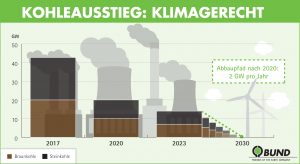Adjusted for inflation, construction volume will decline in 2022 - Price development and rising interest rates will continue to have a severe impact on the construction industry in the years to come - New residential construction will slump more than the overall construction volume - Policymakers will have to change their strategy in order to achieve their goals for the creation of new housing and energy-efficient building renovation in the medium term
Inflation and supply bottlenecks have stopped the construction boom in Germany: In 2022, real construction volume declined for the first time in many years, by around two percent. Similar declines are expected this year as well. Only in 2024 will the construction volume, adjusted for inflation, be back in the black. Residential construction in particular is disproportionately affected by the decline. This is the result of the current calculations of the construction volume, which are prepared annually by the German Institute for Economic Research (DIW Berlin).

© DIW Berlin
Although the construction volume rose by a record-breaking 13.6 percent last year in nominal terms, i.e. in current prices, the increase is solely due to the rapid rise in construction prices. Although this gave the construction companies good sales, adjusted for inflation, construction activity fell by two percent. The urgently needed new housing construction was and is particularly affected, which was even down 4.5 per cent in real terms. "For many years, residential construction has always grown faster than the overall construction volume. Now there are signs of a trend reversal, especially in new construction, which policymakers must take into account," says study author Laura Pagenhardt.
Change in strategy called for
The federal government's goal of building 400,000 new flats per year is thus becoming a distant prospect. Already in the last two years, no more than 300,000 flats have been built. This year and next, the study authors expect that worsening financing conditions and political uncertainty will make investors even more cautious. However, construction prices are likely to rise less sharply due to the easing of supply chains and declining capacity utilisation. "Adjusted for inflation, the construction volume will probably still be negative this year and will only be positive again from 2024, but even then residential construction, especially new construction, is likely to lag behind the overall development," expects study author Martin Gornig.
"What is needed is a master plan that not only supports demand with long-term funding programmes, but also counteracts the bottlenecks in supply" Martin Gornig
He therefore calls for a change in strategy. Although the federal government has already decided on measures to promote housing construction through taxation, it must focus more on redensification of existing buildings in order to create affordable new housing, especially in urban areas. At the same time, there is a danger that a large part of the subsidies, especially for energy-efficient building renovation, will evaporate into rising prices if the supply side is not strengthened in addition to the demand side. According to Gornig, what is needed is a master plan that not only supports demand with long-term subsidy programmes. In addition, it must increasingly promote the expansion of planning, production and installation capacities in order to counteract bottlenecks in supply and thus price increases.
Keywords: DE-News, Quarters, Settlements, Housing, Housing policy



